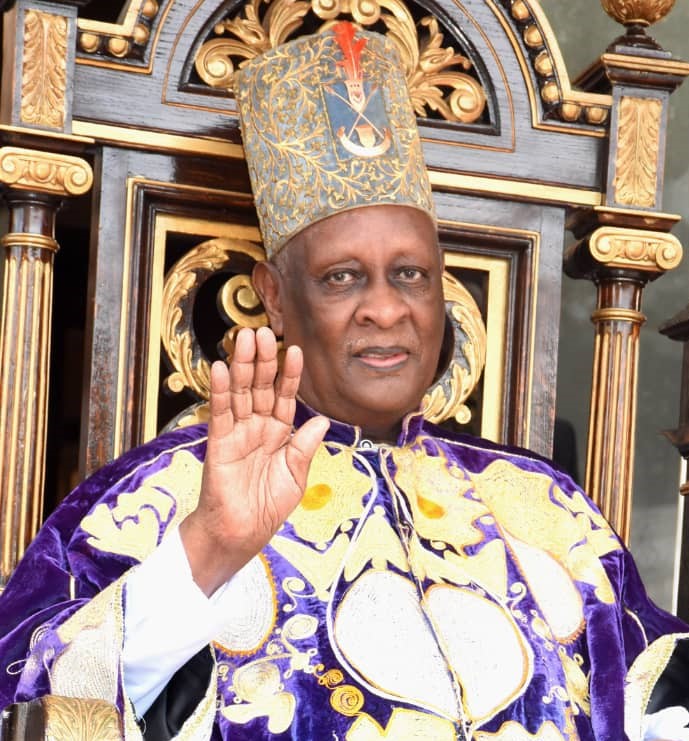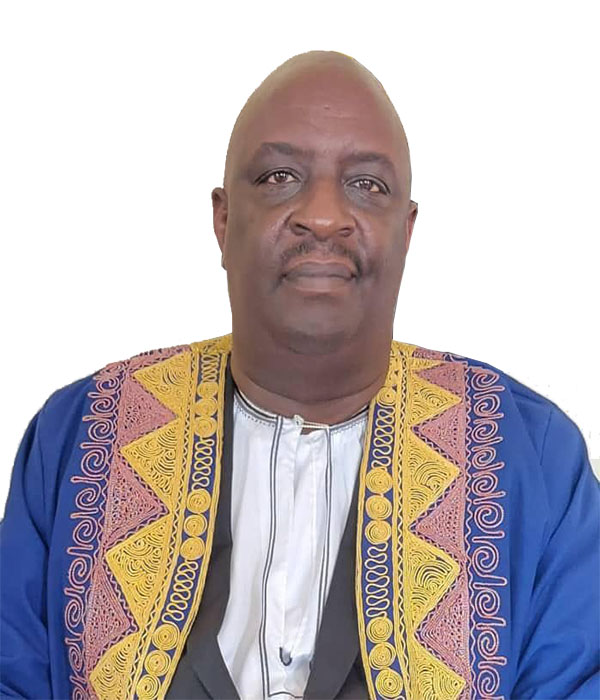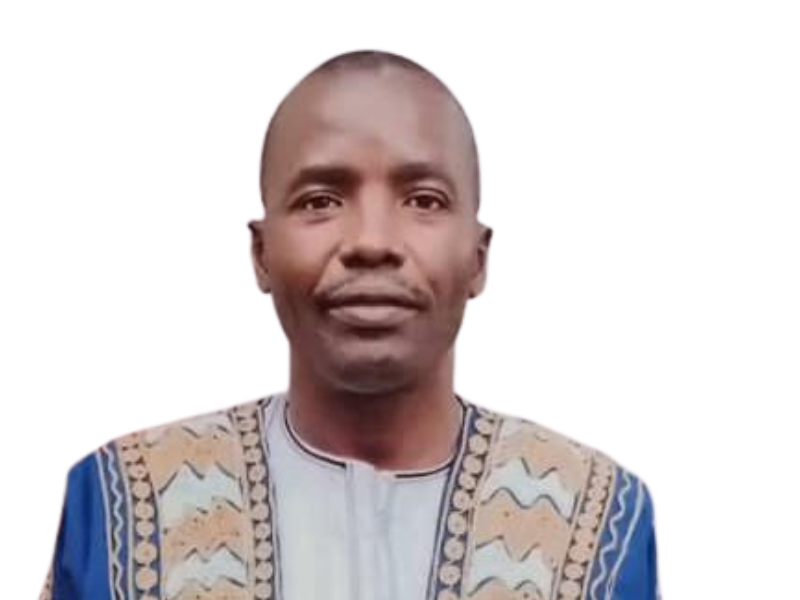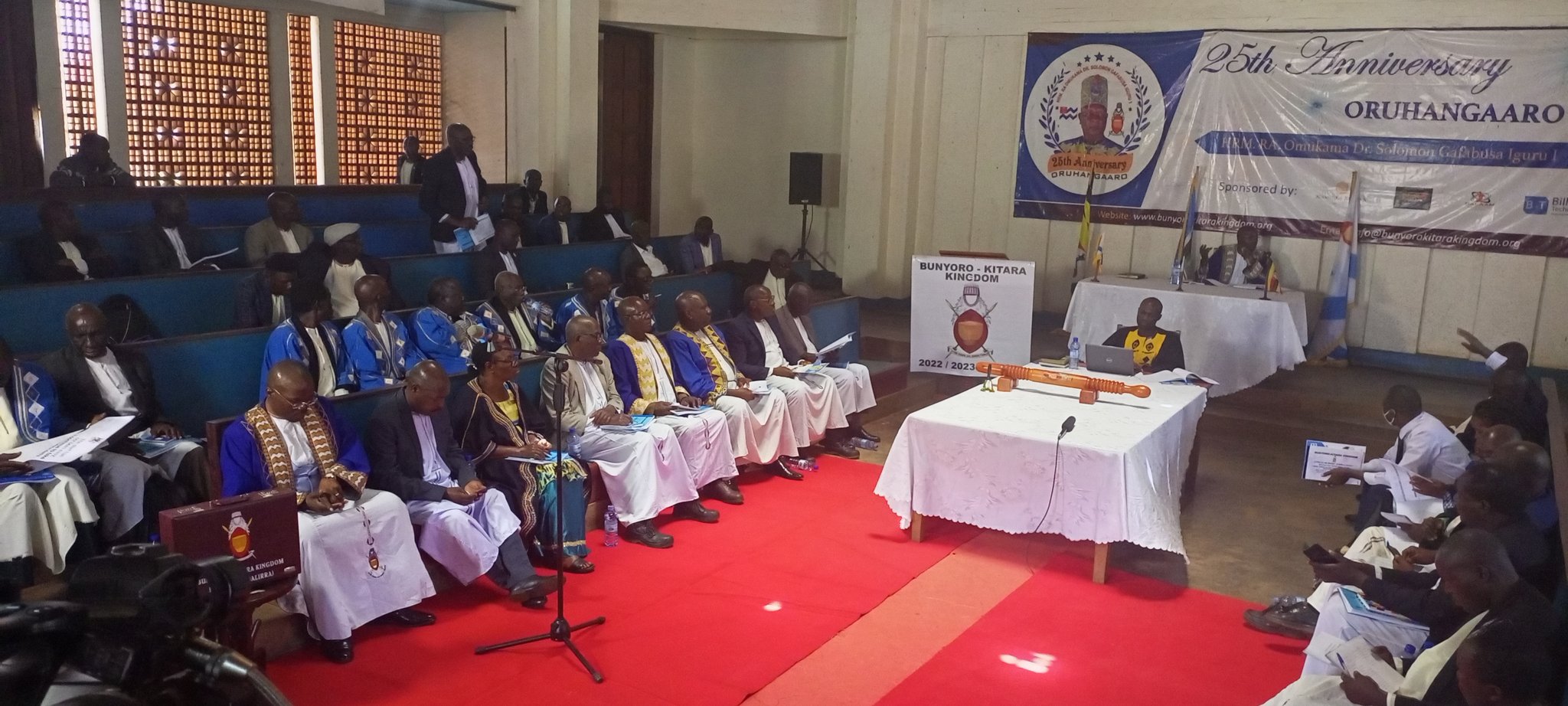- July 23, 2018
- Posted by: Communications
- Category: Our History

This section is intended to deal with the major achievements of Babiito Kings from Ocaki Rwangira, successor to Isingoma Rukidi Mpuga to Olimi V., Rwakabale, the twenty first King (Mukama) of Bunyoro Kitara. And also show the major developments which took place in this period which run from around 1500-1852. It is proper to begin by observing that when Isingoma Rukidi Mpuga died, Bunyoro-Kitara was plunged into a state of despair.
The national drum remained with its top downwards. Not once was it sounded. Silence covered the country like a shroud, and in the homes of people the rattles were put aside and all music ceased. The instruments of raiding were sheathered and everyone donned his oldest and dirtiest garments. People fasted day after day with sorrowful countenances; for death had never hitherto fallen on the throne. The Bunyoro regarded the death of the first Bito King as the curse on the King and prognostication of the overthrow of the Kingdom.
When the announcement went forth that a new king had been found, the nation breathed fresh hope and threw aside all garments of mourning. All people hastened to the capital to pay homage to the new king. The king was Ocaki Rwangira, son of Rukidi Mpuga. He was presented to the people by the priest, who placed on his head, the ancient crown of the Bacwezi. Offering of cattle were given to the king and deputies from Toro, Nkore, Busoga, and Buganda also presented their gifts. When the Omukama had received the homage of the people, he reversed the drum and exercised the royal prerogative of sounding it, as a sign of his sovereignty. As the booming resounded from hill to hill, the people broke out into deafening shouts of “Okali”, hail to our king and all the drums were awakened at the sound and responded in a roar of rejoicing.
Ocaki Rwangira became successor to Isingoma Rukidi Mpuga. He was a very peaceful man. During his reign Bunyoro Kitara enjoyed peace.
Historians attribute the peace to the absence of quarrels among the members of the royal family which had not yet started. Ocaki remained on good terms with his uncle Kato Kimera of Buganda and used to exchange gifts and messages with him. Ocaki did not have children. He was buried at Keci and his garments at Irangara. His mother was Iremera of the Balisa clan.
Ocaki was succeeded by Oyo I, Nyimba Kabamba Iguru. He ascended the throne when he was a very old man. There were no wars during his reign. He was called Kabamba Iguru because he had very many children. He had more than two thousand children. He was buried in Bukidi while his garments and personal belongings at Kinogozi Masindi. His mother was Iremera.
Winyi Rubembeko succeeded his father Oyo, as a very younger ruler. He was a king of playful disposition and one day sent a message to the king of Buganda demanding that porters should be sent to him from Buganda. This annoyed Buganda and opened hostilities between the two kingdoms. Kabaka Kaima of Buganda attacked Bwakamba son of Mukwiri Saza chief of Bwera. Winyi I led the campaign in defence of Bwera and Kaima was wounded in the battle. He died at Isunga in Bwiru (Bwera). Winyi I built his capital in Bwiru and appointed a Bito, Kaganda to rule there. The site of the capital is still known as Winyi’s village. Winyi was buried at Kiburara in Ssingo (now in Buganda) his mother was called Nyaraki of the Bakwonga clan.
Olimi I Rwitamahanga, Kilimbi was successor to Winyi I. The Obwali name of this king was Rukidi. He succeeded his father because of his bravery and courage. He was respected and honoured throughout Bunyoro. People always addressed him as Olimi Rwitamahanga Omwitabyaro wa Kalimbi, (the scourge of nations). When Buganda invaded Bwera and Bulemezi, the two Sazas of Bunyoro, Olimi I matched with his army and killed Kabaka Nakibinge at the battle of Mulago. Being a very hard battle, Kabaka Nakibinge prayed for the assistance of the embandwa spirit Kibuka, who was supposed to fight from the clouds. Kibuka is said to have killed one man, a Munyoro remembered as Nsembukya son of Kwezi.
The Baganda lost the battle and their throne was occupied by a woman called Nanono for one full year. Olimi’s intention was to annex Buganda and restore it to the rule of Bunyoro Kitara. But his advisors prevented him from fulfilling the plan because one throne does not swallow another. However, Olimi withdrew from Buganda and invaded Nkore. Unlike in Buganda, the king occupied Nkore -for some period and built his capital there. According to Kinyoro traditions, Olimi withdrew from Nkore because of an eclipse of the sun. This is believed to have taken place in 1520, a date which agrees with the Nkore estimates of the reign of Ntare I. This date being one of the firm dates, It has been used as a peg on which chronological problems of this region have been hanged. Olimi I died and was buried at Kalimbi in Mutuba Gombolola, Ssingo. His mother was Nyagiro of the Banyungi clan.
Olimi I was succeeded by Nyabongo I Rulemu, who decided to attack Madi to annex it, but lost his son called Kabakangara in battle. He proceeded to fight king Muzibuyecumita in Madi, killed him and his mother and captured cattle called enewere. These killed Nyabongo’s cattle and when the Baganda attacked Kitara, they took away Nyabongo’s war booty. He was referred to as ‘Rulemu’ because of the many battles he fought. He was buried at Muyaje in Buganda but his garments are at Busesa in Buyaga. His mother belonged to the Bacwa clan.
Winyi II Rubagiramasega succeeded Nyabongo. His full title was: Lapenje, Emparangani, son of Cwa. He fought with his brother Kalirahaiguru to win the throne. He was nicknamed Rucwerabazaire because of the grief he caused to the parents during the prolonged war with his brother. He ruled ruthlessly by useless murders and was called Rubagira-Masega – one who provides nourishment for the eagles. He provided people as food to the eagles.
During his reign, he never follght wars and so Buganda extended its borders to River Wabiruka in Mityana. When he died he was buried at Lapenje in Ssingo and his mother was of the Balisa clan.
Olimi II, Ruhundwangeye succeeded Winyi II, with these titles: Ruhundwangeye Mirundi Egoroire Magurugagenda Omurucuba. He never fought wars, was very handsome and loved cattle more than any Mubiito king before him. He used to attend to the cattle himself just like the herdsmen. One day he was hurtingly kicked by a cow he was attending to and since then the Bito kings were forbidden to herd cattle. This action was considered necessary because whenever a King shed blood, it was considered a misfortune to the kingdom. Olimi II was buried at Burongo in Ssingo (Buganda) and his mother belonged to the Bakwonga clan.
Nyarwa succeeded Olimi II. He was called Omuzara Kyaro because he remained on the throne for a very short time. He was cheated out of the kingship by his younger brother Cwa I, who is said to have murdered him. Others claim that he simply disappeared around Mwenge. His mother was called Runego of the Bagweri clan. Cwa I, Rumoma Mahanga succeeded Nyarwa. During his reign a plague broke out among the cattle of Bunyoro and the king ordered all the infected animals to be destroyed so as to arrest the disease and to prevent it from spreading to other districts.
The cows that were destroyed were so numerous that they could not be counted and when the servants had finished carrying out the King’s command, they came and told him that they had killed all the infected animals. The king was also advised to invade Nkore which at this time had a lot of cattle. Not waiting to waste time the King turned to his servants and said: “let him who has a shield smear on butter; he who possess a spear sharpen it and prepare for plunder, so that my flocks and herds should be replenished”.
So the war drum was sounded and the men rallied round the king. He moved and confronted the Omugabe Ntare Kitabanyoro (scourge of Bunyoro) and defeated him at the battle of Rulembo. Ntare fled to the Kagera Islands. The king ordered that the Nkore royal drum should be cut into pieces, so that Nkore should cease to exist as a separate state. He came to be known as Cwa, He who cuts. Cwa I established his capital in Nkore on a hill called Kakunyu.
Meanwhile, Cwa also planned to invade Rwanda under the advise of the Abafumu of the Bacwezi clan that he would get a lot of cattle from Rwanda. This was after a three-year stay in Nkore. He encountered King Kahindira of Rwanda and a battle was fought in which Kahindira was beaten and his cattle captured. Many of the cattle were sent to Kitara. Cwa I settled in Rwanda and thus~, Rwanda became the centre for his raiding expedition. He ventured even beyond Lake Kivu. During his stay in Rwanda, the Omukama gave Rwanda a taste of good administration. He organised it on the same pattern used in Bunyoro-Kitara. In the chronicles of Rwanda, the Kitara occupation of Rwanda, is said to have been great because Cwa I, left a legacy of good administration, which came to be used.
Cwa I, died in Rwanda and his men decided to return to Bunyoro-Kitara. But they tried to hide the death of the King and from this fact developed the custom of saying that the King has been lost orswallowed up. Indications show that, the Banyoro must have been forced out of Rwanda. When Ntare learnt of the death of Cwa I, and the defeat of the Banyoro, he decided to ambush the remaining followers. Many of them were killed thus avenging his earlier defeat. This earned him the name Kitabanyoro. Because Cwa had not left a heir to the throne, a lady Mashamba was put on the throne as regent. She was also the Batebe – the Kings official sister. Her mother was Runego of the Bagweri clan. Mashamba (Regent) was a princess and daughter of Winyi II, and she served as regent when Rumoma Mahanga had been killed in Rwanda.
During her reign, a lady called Ihembe, a former wife of Cwa I, who had escaped from Kitara, was discovered by the elders who were in earnest search for a legal heir. It is said that, this information to the elders of Bunyoro-Kitara was given by a man called Kyamatebe, who used to travel to Nkore with coffee beans, for exchange with butter. She had been captured by the Banyankore when she was pregnant. She gave birth to prince Winyi. When she was discovered, she was returned to Kitara together with prince Winyi. When they arrived the prince was first hidden from his aunt, because the Queen had secret plans to kill the boy. When the elders discovered it, they also planned for her assassination.
This being accomplished and her household officials being liquidated Prince Winyi was put on the throne and crowned as Kyebambe I, because he had usurped the throne of his aunt. He was also called Masikya because after killing her (Mashamba) he had reduced the members of the clan. Mashamba was buried at Rwembuba in Bugangaizi. She ruled for more than four years and was married to a Mubiito called Iguru son of Murro. Iguru is said to have been a cruel man and it was one reason why Mashamba was deposed. Although Mashamba was deposed, her reign remains significant because, she is the only remembered woman to have achieved this feat in this region.
The Basegu clan were raised in importance because the man who reported to the elders about Mashamba’s planned murder of Winyi was a Musegu. So the elevation of the Busegu was in appreciation for their loyalty. The Kings dancers and singers called Abatimbo also gained importance and prominence for the King was a music lover. Kyebambe ruled peacefully and did not exploit the feud in Buganda between Kabaka Juko supporters and those of Kayemba. Omukama Kyebambe I, reigned for quite long and died very old. He was buried at Kijaguzo in the Nyakabimba area of Toro. His mother was a Mubiito called Ihembe.
Kyebambe I, was succeeded by Winyi III, Ruguruka Macolya, a sportsman especially a long distance runner. He begot eight children namely: Rucwerabazaire, Bikaju, Karamagi, Nyaika, Malaki (whose mother was Kahinda), Ruteba (whose mother was Kapapa, Muganda (whose mother was Mworobi) and Onyiri (born by Munyuuki). It is said that Winyi III, died of a snake bite while hunting in Miduma. Winyi III, was buried at Miduma in Sabairu gombolola of Buruli. His mother was called Gawa of the Bakwonga clan.
Omukama Nyaika I, succeeded Winyi III. But he was unacceptable to the clan and elders because he seized the throne when all of them were away. His authority was defied and the first Mubiito to raise rebellion was Bikaju of Bugungu. Bikaju learnt of the situation at the centre from Mugasa who had taken refuge in Bugungu because he feared reprisals for hurling Mugungu’s eye. Bikaju sought the support of the elders to dethrone Nyaika. The elders included; Kapapa Omutaseka, Butyoka Kyokora etc. Bikaju carried out a coup at night and killed Nyaika who ruled for only two years. He was buried at Kihwera in Bujenje.
So Kyebambe II, Bikaju usurped the throne and became King. He was praised for his courage and bravery for having become King without bloodshed. Kyebambe II’ s wife called Kitamire had a secret love affair with Katenga of the Basaigi clan. The king netted Katenga one day but Kitamire gave a sword to Katenga to defend himself. Kyebambe was fatally wounded, but escaped to his palace called Kabagarama and summoned his sons for help. These included Byakaya, Isingoma, Runywambeho, and Isansa. Isansa the bravest was given a spear (erihango) to kill Katenga. Isansa speared Katenga to death and many members of his clan: the Basaigi, Isansa also ordered Mukerenge to kill his Musaigi’s wife called Kindiki but Mukerenge could not because she was pregnant. She was hidden instead. Kyebambe took poison and died. His mother was Kacubya, maid of Winyi III. He was buried at Nyamiryango in Kihukya county.
It was Omukama Olimi III, Isansa (1710-1730) who succeeded his father Bikaju. He built his capital in Isingo-Kyenkwanzi (Ssingo). When he ascended the throne, Mukerenge the executioner returned Isansa’s wife called Kindiki from her hiding place. Isansa named the child Mujwiga, Maharre.
During his reign, Isansa faced problems from Buganda and Nkore. The former extended its borders to Mubende up to the River Nyabakazi, Omukitengeza (mile 84 Kampala-Mubende road, and to Ssingo up to the Mayanja. Nkore too expanded as far as Katonga river in the region of Rwamwanja.
Omukama Isansa attacked Nkore first and passed through Kyenkwanzi, Parajwoki, Bugahya, Bugoma, crossed Nguse river to Buyaga, Bujogoro, Mulongo and Kikana. He encountered Omugabe Karaiga at Rulembo (his capital) and beat him decisively. Nkore was captured and the country raided. Isansa had decided to attack Kyaihangiro too, but he was advised against that by his diviners who told him that it was not in order for Kitara Kings to attack Kyaihangiro.
First, Omucwezi Ndahura was captured and defeated there, in addition and secondly, Cwa I, got lost in that place. However, Isansa’s son called Mali had already left for Ihangiro before his father had been given advice. Indeed he was defeated and captured in Ihangiro. Prince Mali never left Ihangiro, where it is said he got children. Olimi III Isansa died and was buried at Kiguhyo in Buyaga. His other burial place (for his garments and other personal belongings is at Bukonda in Bugangaizi). He was son of Mpanga Omwangamwoyo, Omubiitokati (of the Babiito clan
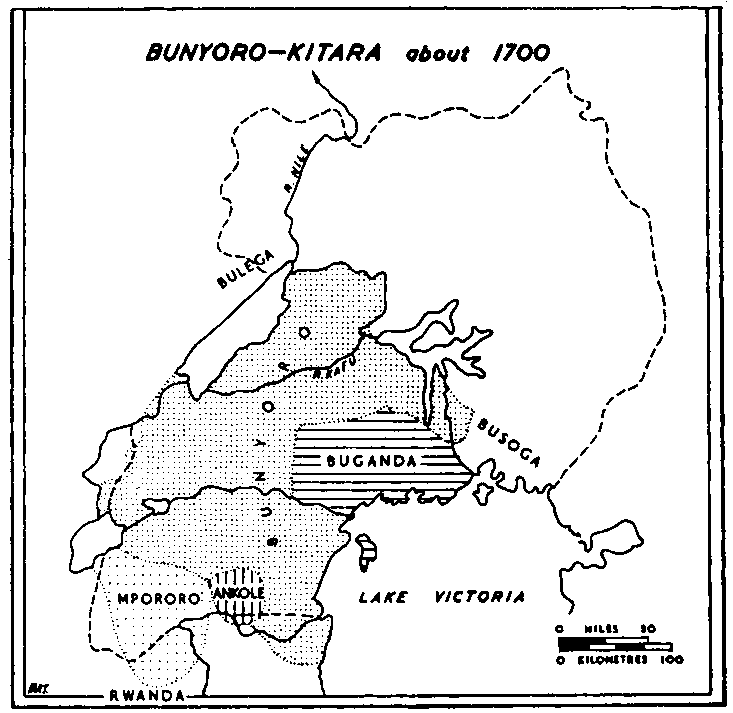
Omukama Duhaga I Cwa Mujwiga (1731-82) succeeded Isansa. He was physically small and called Ruhaga meaning that he would expand in size while on the throne. He was greeted with the title of Maherre ga Isansa, Mujwiga, Matamancwera, Engundu Yekisiha, because he was very light-skinned (maherre); was called Mujwigo because he was very hairy; “Matamancwera” as he was uncontrollable in times of temper; “Ngundu yekisiha” because he was so difficult a man to deal with. It was the Banyankore who called him Cwa because he fought them like the celebrated Chwa (Chwamali) of long ago.
When Duhaga became King, he discovered that there was no Musaigi to succeed to the position of the King’s mother because his father, Isansa, had killed all members of the Basaigi clan in the country to avenge the death of his father Kyebambe II, Bikaju. The Basaigi, however, were still in Nkore and from there a Queen was got to fill the position of the official mother of Omukama Duhaga I. Duhaga I, who never had children was made fertile by a man who kept Wamara’s spear called Kimuli Kyokya Mahanga, from Bwera. From there Duhaga produced many children. He had the second greatest number of children among all Kitara Kings.
Duhaga fought against Nkore’s King called Karaiga. He defeated the latter and destroyed his royal drum called Bagendanwa, which he cut into pieces. He also invaded his son called Kitehimbwa, his own ruling in Kooki, but was protected by Kabaka Jjunju. Kitehimbwa had declared Kooki an independent kingdom after he had stayed behind from an expedition with his father in Nkore. Kitehimbwa lost his life and Kooki fell to Bunyoro. However, Kabaka Jjunju invaded Kooki and installed Mujwiga in Kooki. The Kabaka also attacked and killed Bwakamba son of Mukwiri, head of the Babiito clan as well as Saza Chief of Bwera. The Bwakamba family had ruled Bwera since the Omukama Isaza Waraga’s time. Jjunju appointed Ruziga of the Basita clan as saza chief of Kooki and Kooki fell to Buganda Kingdom. Kooki on the other hand became Mujwiga’s kingdom.
Today there are many characteristics which denote that Kooki was for a long time, a province of Bunyoro-Kitara Kingdom. Such personal names as Katabarwa, Kagoro, Kagerre, Bwigora, Mukwiri, Kasumba, Komungoro, Kigemuzi are all Kinyoro authentic names.
Duhaga I, declared war on Buganda so that he could recover his lost territories. But as was the advice of Nyakoka’s predication, Duhaga was defeated. His move had been supported by another diviner called Kakyali, whose advice was taken for granted. Duhaga fled into Kaborogota swamps and hurt himself in the process. Some people suggest that he was cut by a papyrus, others say that he fell on his own spear which wounded him. Whatever the case, he was carried away by his followers to Nkwali market and died there. He did not die of wounds but took poison as most Kings of Bunyoro-Kitara did. He bequeathed the throne to Kasoma his son. 70 of his sons had died in the battle with Buganda. Duhaga was buried at Irangara in the Mutuba III Gombolola in Bugangaizi.
Omukama Olimi IV Kasoma (1782-86) succeeded as the next ruler. He built his palace at Kijagarazi Nsonga in Bugangaizi. Then moved to Kiboizi. However, his brother Nyamutukura who lived at Kisunga Rugonjo became unhappy with Kasoma, being a King. He therefore planned to seize the throne from Kasoma, through a coup d’etat. Having mobilized his army, he sent a message to Kasoma that he was coming to pay his respect to him. But Kasoma was wise enough to realise his brother’s dark plans that he also mobilised his army. The two brothers met at River Nguse. As Kasoma’s men approached near to Nyamutukura, Kasoma told his men to raise their shields to find out whether Nyamutukura had come for peace or war. Nyamutukura in turn ordered his men to Fix their sharp blades on to their spears, ready for attack. A big battle ensued and ended with Nyamutukura’s defeat and flight. Tradition records that so many people were wounded in this battle that the river Nguse was turned into blood.
Nyamutukura fled through the papyrus covering the swampy river of Kairabya. He was assisted by the man (his servant) called Kanyaihe. When they had crossed to the other side, they arrived at the home of a man called Mutaikanga, who was a chief. From there he moved on and arrived at a house which belonged to a man called Kataba, before reaching his own area of Kisunga. He swore never to go back to the capital because he nearly lost his life there.
Nyamutukura who gave up every hope of fighting for the throne was later to be assisted by Rumoma the Okwiri (head of the Babiito clan) to take power. One day, Rumoma the Okwiri and Rabwoni, son of Bireju came to pay their respects to the King. The two got drunk while at the king’s palace and started a heated argument which ended up into a quarrel. Rabwoni accused Rumoma of complicity in Nyamutukura’s plot to overthrow Kasoma, and mocked him for the failure of the conspiracy. Rumoma was very hurt by this allegation and assured Rabwoni that if he had been on the side of Nyamutukura, it would not have been possible for Kasoma to be King.
Although the King was called upon to intervene and stop the quarrel, he refused arguing that the two were sensible men who knew what was required of them to do. Okwiri Rumoma was so annoyed that he decided to give his support to Nyamutukura so that he could be the new king. He sent message to prince Nyamutukura in Rugonjo to come, so that they would move together to the capital and overthrow Kasoma. Nyamutukura, who refused at first later changed his mind when Rumoma had sent his son to Nyamutukura as a guarantee of his word.
They moved against Kasoma and Kasoma was seriously beaten. Nyamutukura marched with his victorious army into the palace and installed himself as king. Kasoma was offered posts in the new government but refused them, there upon causing anger to Nyamutukura who then ordered his immediate execution. He was taken to Kabale and executed near the lake. Olimi IV Kasoma was buried at Ruhunga in the Gombolola of Mumyoka in Bugangaizi. His mother belonged to the Mucwa clan and was a sister of Nyamutukura’s mother.
Nyamutukura’s original name was Musuga. He was given the name Nyamutukura because he was fair-skinned like his father Duhaga. He was given the name Kyebambe because he had killed his brother and usurped the throne. Some people say that this name was given to him by Kasoma before his death.
Nyamutukura established his capital at Ruhunga, then moved to Kikumbya from where he sent his son to go to Toro and count all the cattle there and bring them to him. He moved to the capital to Kihagura Burambika where he spent seven years before moving the capital again to a place called Nyakitojo. Nyamutukura reigned for a long period of time (1786 -1835), became too old and forced his son to desire the kingship through drastic steps. Many of the sons decided to rebel. The first son to scheme against his father was Karasama Bugondo, county chief Bugungu. He sought support from Kabaka Kamanya of Buganda, but the latter refused to give in the support. He instead informed Nyamutukura about the plot because the two kings had been on friendly terms. Nyamutukura tricked his son and got him killed before he reached Bugungu. His remains are at Kitagi in the Sabagabu Gombolola of Buhaguzi.
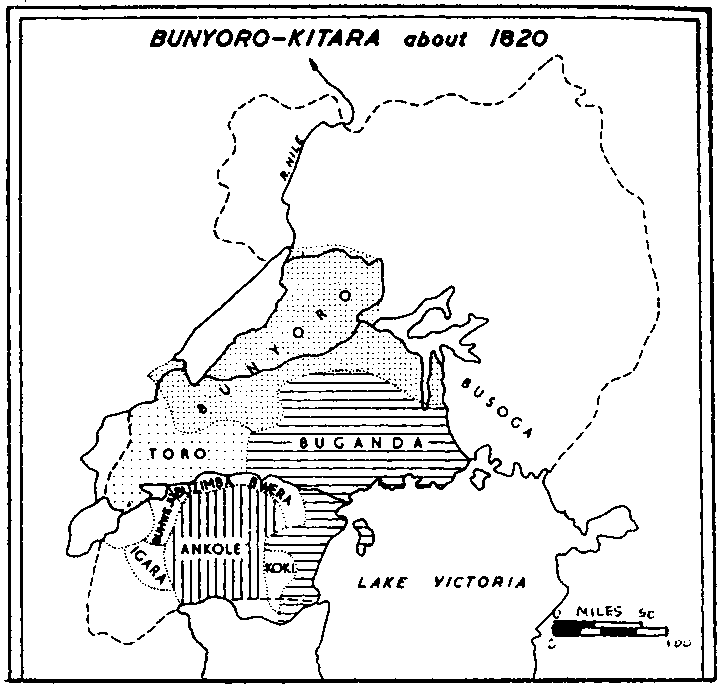
The next rebellion was by the favourite son called Kaboyo who allied with the Batoro and Basongora elders. He had been sent to inspect the herds in Toro, but noting that he was welcomed, he declared Toro independent and made himself king of Toro Kingdom. Nyamutukura never wanted to kill Kaboyo for he loved him. So he prevented his soldiers from killing him. The soldiers were sent after the King heard that his rebel son had attacked the King’s cattle at Myeri. He told the soldiers not to chase Kaboyo if he ran away because he had a weak heart and not to engage him if he decided to give battle. Nyamutukura moved his capital to Bugoma to avoid raids from the Toro rebellion. He died there five years after Kaboyo’s rebellion. Nyamutukura had many children below are those who are known and their respective sazas. These were:
|
Kaboyo Omuhundwa |
ruled |
Toro |
|
Mugenyi |
ruled |
Mwenge |
|
Isagara Katiritiri |
ruled |
Kibanda Chope |
|
Karasama Bugondo |
ruled |
Bugungu |
|
Kagoro Mugamba |
ruled |
Kijumba |
|
Nyinamwiru (his daughter) |
ruled |
Nkoni |
|
Kahibale |
lost his life in the Toro campaigns |
|
|
Kabanyomozi |
(Princess) |
|
|
Kalyebara |
(Princess) |
|
|
Kahoza |
(Princess) |
|
During the reign of Nyamutukura, Kitara weakened because it was reduced to a very small kingdom. Toro succeeded and extended as far as river Munobwa in Mwenge. Buganda moved as far as Kiboga and Nyabakazi in Buhekura county. When Nyamukutura died he was buried at Kibedi, Nyamarunda in Buyaga. His mother was called Kafunda of the Bacwa clan.
Omukama Nyabongo II Mugenyi (1835-48) was the successor to Nyamutukura. He succeeded his father when he was a very old man. Nyamutukura had offered the throne to Kaboyo, but he declined it. Mugenyi’s ekikubyo name was: Biranga of Mwenge. He was a very peaceful King.
He neither fought with Ssuna II, of Buganda nor attempted to suppress the rebellions of his brothers Kaboyo, Kachope, and Isagara Katiritiri. He built his palace at Makara, then at Rwenyenje, then at Kitemba. He then moved to Galihuma Kijumba, Rwenkuba and finally to Rwenkukuni where he died. He was buried at Bukonda and his tomb was looked after by Ibona and his wife Kisambwa. His known children included:
Dwetakya
Nyakuhya
Kweru
Rwakabale
Kamurasi (Saza Chief Bugungu)
Kamihanda Omudaya (Saza Chief of Kicwabugingo)
Isingoma Rutafa(the Father of Zeresire, Alifunsi (Alphonse) Ngasirwa and of Jessica Gafabusa and Kahimbara (daughters); and Kasami minor chief of Bujwahya. Mugenyi’s mother was Kajaja of the Bafunjo clan.
Omukama Olimi V Rwakabale (1848-52) became successor after the death of Mugenyi. When he became king, his elder brother called Kweru tried to rebel but he was crushed and killed, at Buhango Nyabinja. Olimi Rwakabale never reigned for long because Kamurasi his younger brother disapproved his rule. Kamurasi organised a large army so that he could attack and overthrow the king. Prince Kamurasi together with his brother Kamihanda Omudaya, sent a message to Olimi V that they had gone to Bugoma to look after their cattle, when in actual fact they were organising a coup-d’etat. When they reached Bugahya of Kasumba, Kamurasi instructed the inhabitants to shout loudly that Kamurasi had rebelled. He then proceeded to Bugoma by way of Rubindi and Bugahya of Jawe Nyinekiringa and arrived at the island of Karakaba, where he found supporters who rallied to his stand. At this point Kamurasi mobilised his army which included soldiers from Bukidi. Kamuhanda also formed his, assisted by Rugangura son of Nyakojo Omusengya.
Kamuhanda’s army was commanded by Kikwizi son of Mulere of the Basaigi clan. Kamurasi moved and confronted Olimi with a large army, in which, Olimi was defeated and killed. He was buried at Kitonya in the Gombolola of Mituba III, Buyanja, Buyaga. His mother belonged to the Bazira clan.
From the aforesaid facts it remains undoubtable that the kingdom of Bunyoro-Kitara declined steadily from about 1650 and the decline continued up to the 19th century when the southern tributary slate of Toro won its independence. However, the decline was a bit reversed by Kamurasi, successor to Olimi Rwakabale. He tried to exploit the opportunities provided by the expansion of the long distance trade, to revive the kingdom. The reign of Kamurasi and those of his successors will be treated separately, because of their great significance in the political history of Bunyoro Kitara. For instance, it is during Kamurasi’s reign that Bunyoro-Kitara begins to have formal contact with foreigners, such as Arabs and Europeans. Contacts which fundamentally made Bunyoro’s political, economic and social affairs to acquire new influence. The new influence should be dealt with it one is to understand the course of events and know how Bunyoro’s politics faired under a new environment, which largely came to be determined by foreign influence.
REFERENCES:
1. Ruth Fisher, “Twilight Tales of the Black Baganda”: 2nd Edition Frank Cass & Co. Ltd. 1970,
2. J. Nyakatura: Anatomy of an African Kingdom A History of Bunyoro-Kitara, NOK Publishers, New York, 1973
3. S.R. Karugire : A Political History of Uganda: Heineman Educational Books, Nairobi – Londo 1980
4. K.W. (i.e. Kabalega & Winyi): “The Kings of Bunyoro-Kitara” Uganda Journal, Volumes 2/252, 3/155, 4/751, 5/53, (1934,1935,1936 and 1937)
